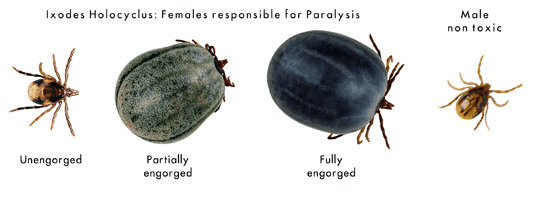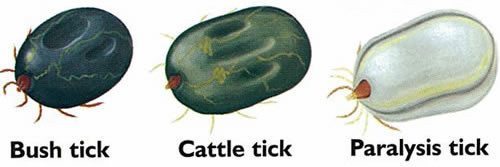Found a mysterious creepy crawly thing on your pet? Wondering whether to panic? Let’s talk about ticks, those tiny little creatures that can be so dangerous to your pet.
Ticks have the ability to strike fear into the hearts of pet owners, particularly the paralysis tick. Other ticks can spread disease, cause anaemia and are pretty annoying though, so all of them need to be removed from your pet, as soon as possible.
How to Remove a Tick
To remove a tick, don’t use any chemicals on the skin. Just use a tick twister and scoop in under the tick, where the head of the tick meets the skin, then twist and pull. If you don’t have a tick twister, use tweezers or long fingernails to grip the tick close to the skin. Don’t forget the twisting part to release the mouthparts of the tick. The key is not to squeeze the body of the tick. It doesn’t matter if a bit of the tick is left in, there will be a little tick crater where the tick was no matter how it is removed and the essential part is to remove the main part of the tick.
You also want to feel your pet all over to make sure there are no others. Most ticks are found on the head and neck, so check inside the ears and mouth and between the toes too.
What Does the Paralysis Tick Look Like?
Now that you’ve removed the tick, the next step is to identify it and work out whether it’s a dangerous one. Probably the best option is to pop into a vet office and bring the tick with you. But otherwise the key to tick identification is to look at the colour of the legs.
There are several different life stages and the body colour of the tick is not consistent.

The adult paralysis tick has 8 legs in total near the head. The front pair are brown, the middle ones are white and the back pair are brown.

What Do I Do if It’s a Paralysis Tick?
The short answer is, get to the vet. Even after the tick is removed the toxin is still in your pet’s body, and even with treatment most pets tend to get worse before they get better. The earlier treatment is started, the better off your furry friend will be. With advanced tick paralysis, even with treatment your pet can end up on a ventilator for a week if the respiratory muscles are paralysed. The earlier the treatment is started, the more chance your pet has to go home healthy and walking. You can read more about tick paralysis here.
How Do I Protect My Pet?
The best way to protect your pet from tick paralysis is using a preventative tick treatment, like a tick collar, top-spot treatment or monthly tablet. We absolutely love the two oral treatments for dogs: NexGard and Bravecto. NexGard is used monthly and Bravecto is every 3 months. Both work for fleas as well. If you have a cat, try Frontline spray.
We hope we’ve helped you work out what to do if you find a tick. Remember the key is:
- Remove the tick by twisting and pulling where the tick meets the skin
- Take the tick and your dog to the vet ASAP
- Early treatment is the key to success
- Use a preventative when the warmer weather occurs









